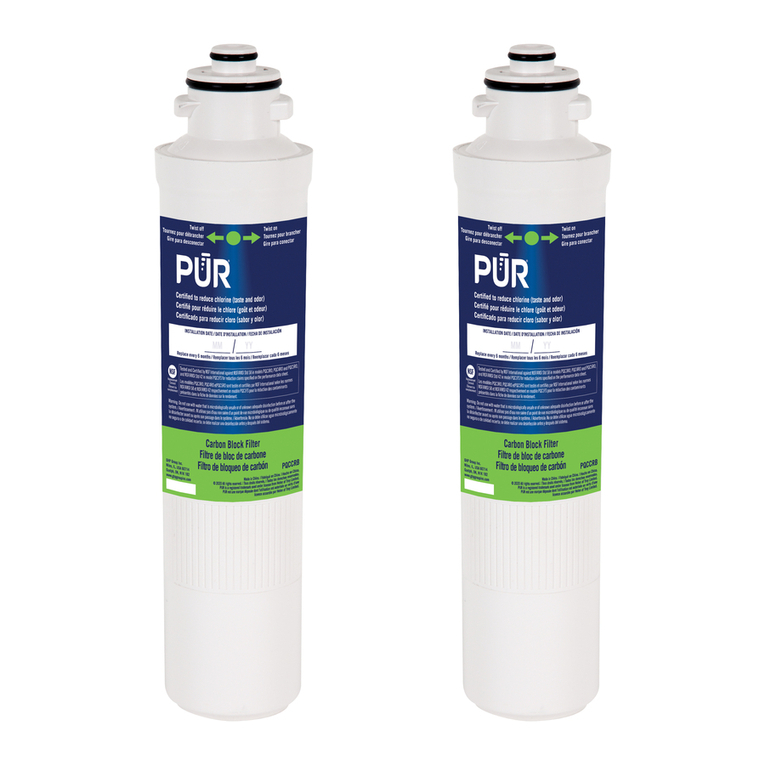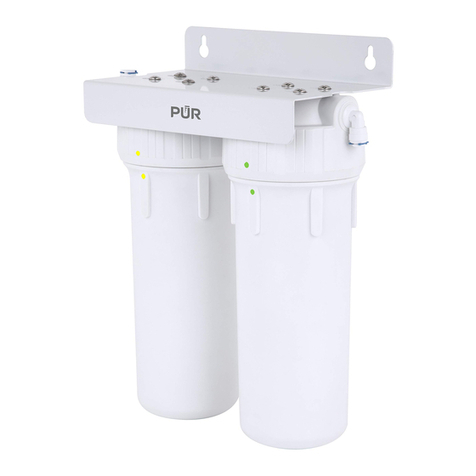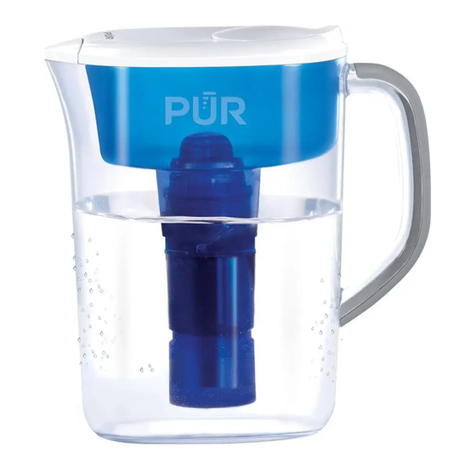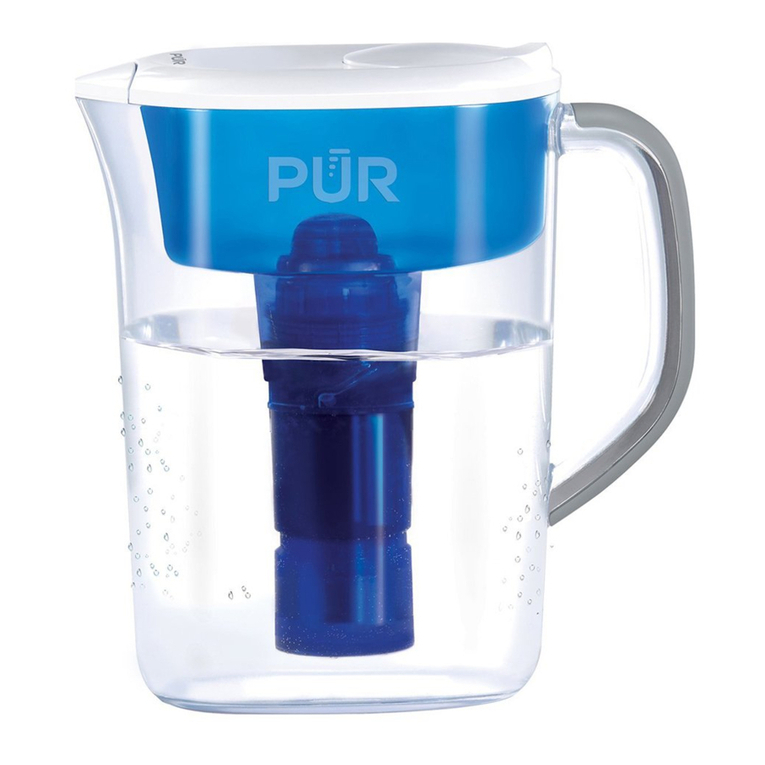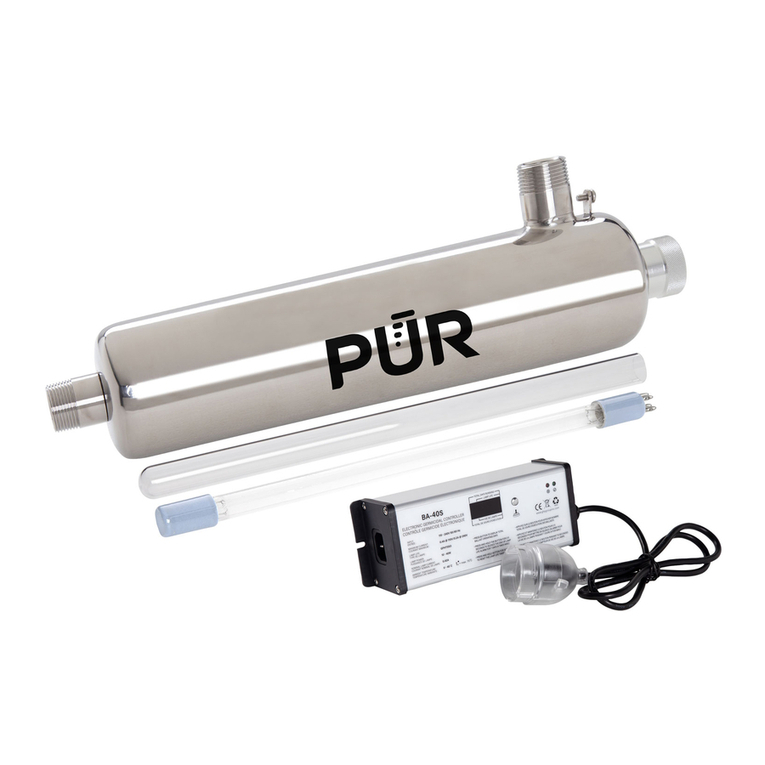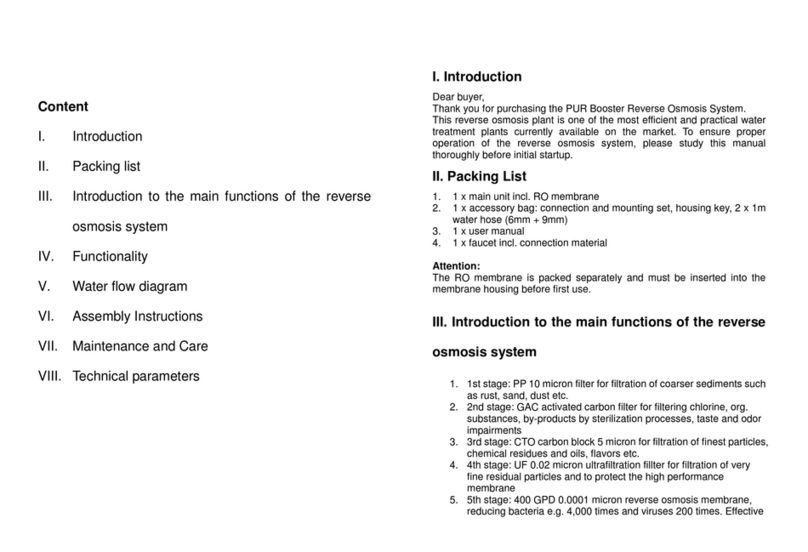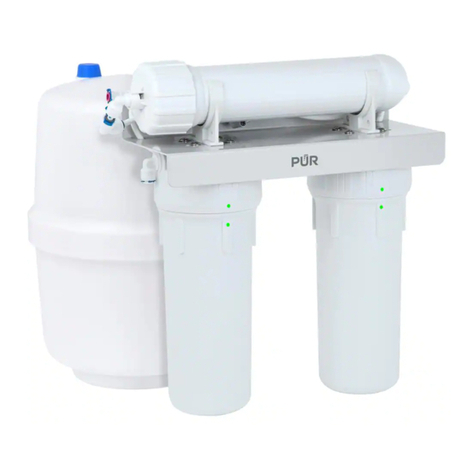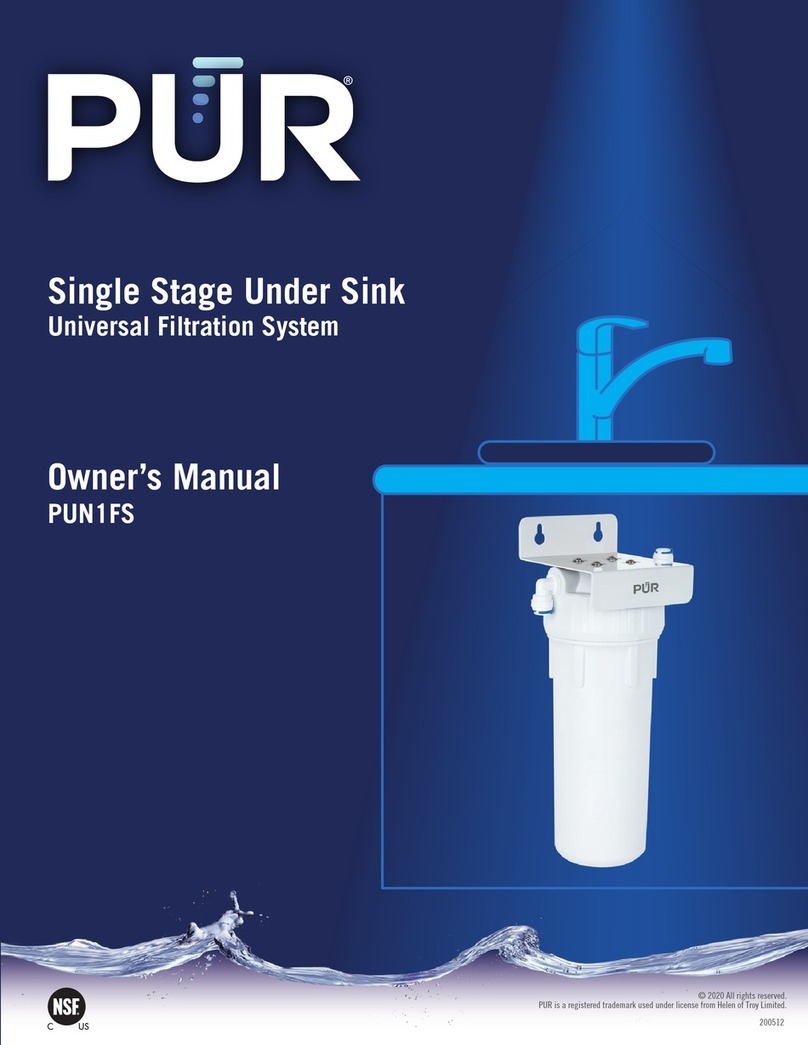
9
Seasonal Use Maintenance Requirements:
If your system is only being used seasonally, it must be stored properly for the winter. Drain all water from the system and
disconnect it from the power source. Cap both the inlet port and the outlet port to prevent entry of insects and small animals.
Remove the filters from the system and discard in the trash.
Before placing the system back in service, it is recommended that the household plumbing procedures described below be followed
and that the entire plumbing network be fully disinfected and flushed prior to using the UV filtration system.
Always install new filters in the system. Do not re-install filters used during the previous season.
To clean any dust build up and/or dirt on the outside of the Quartz Sleeve, use a lint-free cloth with alcohol or non-abrasive scale
remover.
1. Familiarize yourself with the various shut-off valves on your system. It is important to understand which combinations of valve
positions allow you to isolate the UV filtration system.
2. Shut the main water supply off and drain the hot water tank and any other storage tanks that may be downstream of the filter
housing.
3. Close the valves necessary to isolate and remove the Carbon Block filter cartridge (Carbon Block filter is 2nd of the 2 UV
pre-filters) from the housing with the wrench provided.
4. Remove the filter housings using the wrench provided with the system. Pour 1-2 cups of household bleach into the carbon filter
housing and reattach to the filter cap. Remember to leave the carbon filter out during chlorination.
5. Re-install the filter housing without the filter. Make sure that the housings are seated properly against the filter heads. Re-
open water lines slowly, checking to ensure there are no leaks.
6. Go to the furthest tap in the house and run the cold water until you notice the odor of bleach. Repeat this step at all other taps,
including washing machine, shower heads and toilets.
7. Allow the solution to remain in all the water lines for 30 minutes.
8. Remove the filter housings with the wrench provided with the system. Re-insert the Carbon Block filter into the
housing. Make sure that the housings are seated properly against the filter heads.
9. Slowly open up the main water lines and check the system for any leaks.
Caution: The addition of Chlorine (Bleach) to a hot water tank that has in the past been fed with untreated raw
water with high levels of contaminants (iron, manganese, hydrogen sulfide, organics, etc) will result in oxida-
tion of these contaminants and may require repeated flushing of the hot water tank. This contingency must be
dealt with independently under the start-up procedure.
Caution: It is critical to ensure that the water distribution system is fully flushed of all residual chlorine prior to
use. EXTREME CAUTION SHOULD BE EXERCISED, as the level of chlorine in the system is approximately 25-50
times greater than that observed in municipally treated water. This is required for the disinfection of the
household lines. It is extremely important that proper flushing procedures be followed for all taps prior to use.
In-House Water Distribution System Disinfection:
The following procedure is recommended for non-municipally supplied water installations. For systems installed on a municipal
water system, plumbing system disinfection is at the discretion of the user.
The entire household water system, between the UV filtration system and your taps and water outlets, MUST be sterilized before
system start up in order to destroy any residual contamination. The same treatment can also be completed at any time in the
future that untreated water is allowed into your distribution system (e.g. through an inadvertent by-pass, plumbing additions or
repairs, etc.) or in the case of seasonal dwellings at the beginning of each operating season.
Unscented household bleach (5% sodium hypochlorite) is an acceptable decontaminant when used at the rate of 1 liter, (0.3 gal-
lons) of bleach per 1000 liters, (264 gallons) of household plumbing volume. This includes the volume of water contained in all
lines, hot water tanks, etc. located 'downstream' of the filter housings. This ratio provides a dosage of 50 mg / L or 50 ppm, which
is sufficient for disinfection. To disinfect the distribution system, carry out the following steps. Ensure that the UV System remains
turned on during the entire process:














